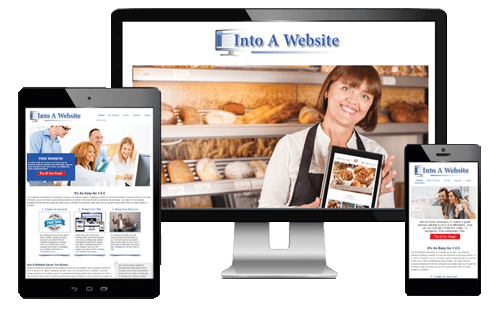11 Ways to Help Visitors Navigate Your Website
What you sell doesn’t matter as much as how you sell it. A survey by Clutch revealed that people use digital media for 6 hours a day on average. Out of 612 participants, 94% admitted that easy navigation is one of the most important features they seek in a website.
Be it shoes or shower caps you sell, a user needs to be able to go through your website and find what they are looking for in less than 10 seconds. Complicated website navigation can drive users away from your website.
Website navigation is part of web design and development; some of the best sites use it to optimize their traffic. Here are some website navigation best practices to help visitors navigate your website, and increase your sales.
1. The Science Behind the Click
Nobody likes clicking in excess. A study on website navigation revealed a phenomenon known as the 3 Clicks Hypothesis, which states that it is essential that you arrange the content on your website so that it doesn’t take the audience more than three clicks to find what they are looking for. This could be done by placing buttons that redirect the audience to the most important segments, such as services or the Home Page.
2. Make it Web Crawler Friendly
Crawlers may sound creepy, but they are merely a term used for the Google algorithm, which crawls over your webpage to assess it for search result ranking. Website navigation best practices include optimizing keyword and heading placement so that the crawlers can find the relevant keywords.
If a crawler can’t match the keyword to the intent of the content, they may lower the ranking or penalize the website. Your design and content need to be planned and cater to what the crawler is looking for.
3. Don’t Sacrifice Readability for Design
One of the worst choices to make is sacrificing the readability and navigation of a website for a unique look. People do go for websites that looks different. However, these websites should still make use of, and follow a few simple guidelines to help users navigate the site and reach the content they are looking for.
For example, placing links to some of your site’s internal sage in less obvious or easily overlooked parts of your website can make them hard to find to your users. Scattering links throughout your pages can also confuse your user, and make it hard to get visitors into your sales funnel and capture new leads.
4. Add the Navigation Bar to the Top of the Website
No matter how tired you are of looking at designs with the navigation bar at the top, keep it that way. The bar enhances website navigation by directing users to the specific inner pages they want to visit. Some things to keep in ming are:
- The bar is the first thing a site visitor sees
- The user may not scroll beyond the top part of the page
- People expect a site’s main navigation to be t the top of the page
5. Add your company Logo to the Upper Left
This is an oft-repeated practice, and that is exactly why you should follow it. Since users have been spotting logos in the top left hand corner of websites for quite some time, that’s exactly where they will expect to find yours. Moreover, they are already spending a good deal of time on your site with their attention focused on the main navigation bar; why not get some branding in at the same time?
An exception to this rule however. Be careful if you are selling internationally. In some countries, text is written from the right to the left. If your website has a target demographic that might read right to left (unlike in the U.S., where people are used to reading from left to right)m then the expected location for your site logo would be the upper right.
6. Make Everything in the Navigation Bar Clickable
Okay, maybe not everything. Your main nav bar is where people are looking for directions on how to access the content they are searching for, make sure it delivers what they need. Also, people expect that by clicking on your company logo, that they will be redirected back to the homepage, give them what they are expecting. Also, as space in the navigation bar might be limited, doing so frees up a spot as you no longer need to provide a link back to “home” of the “homepage”. The logo is there anyways, why not give it a little more power and functionality?
7. Only Include your Site’s Most Important Pages in the Main Navigation Bar
Website navigation best practices suggest you keep it simple. When developing a website, try to think of how you can make the experience easy and worthwhile for the user. Keep it simple and straightforward. Select the most important pages of your website for inclusion in your main nav bar. If your main navigation has too much information, a user is likely to click away than browse more!
Also, it is wise to add the navigation bar to the top in a singular line instead of adding a hamburger option that unfolds billions of choices. Hamburger icons, are usually a necessary functionality for mobile devices, where screen width is limited, but keep the site navigation obvious and easy to read without requiring the user to click to see more. A hamburger menu won’t allow your user to gauge whether your content is relevant to them as quickly, which increases the likelihood that they will leave your website and go elsewhere.
8. Have a Consistent CTA
A CTA is a call to action. Adding a CTA button to the top level of your website and following it throughout the theme, by standardizing the text, and color will help it stand out. Your site CTA is what you want a perspective client to click on or an action that you want them to perform. A consistent CTA, has a better chance of being clicked and can lead to more conversions as a result.
9. Include a Search Bar
Add a search bar option to your website, and make sure your website development team optimizes it to include everything available within your website. Your navigation bar can’t contain everything, but a search bar helps give users a place where they can find the pages of your website which aren’t worthy of inclusion in your main navigation.
10. Utilize your Website Footer
The footer is an integral part of the website as, once a user has scanned through your webpages content, they have easy access to a new list of pages to continue their exploration of your website. In short it gives them a place to go when they reach the end of the page.
11. Make Sure Your Website is Mobile Friendly
Instruct your web development team to make your website mobile friendly. Most users will navigate your website on a portable device. A website that hasn’t been optimized for the mobile user is sure to make your company look bad and result in lost conversions and their associated revenue.
To Sum It Up
Hire a professional web development company for your web development project. Prioritize website navigation and make sure that your most relevant pages are easy for a site user to find and follow. If you make it easy for a prospective client to find what they are looking for on your website, they are more likely to hire you for the job.
Build a website that makes a difference!






